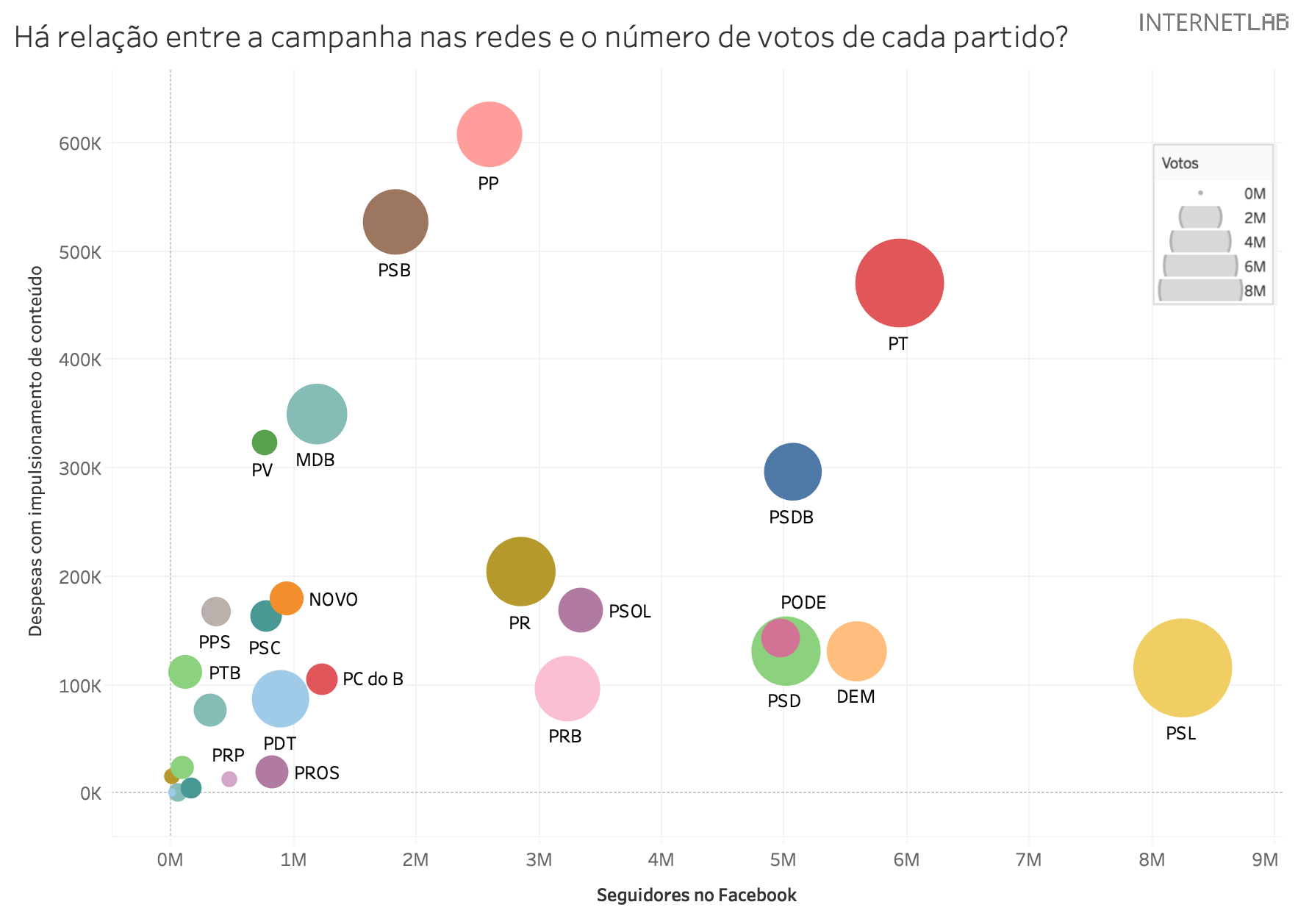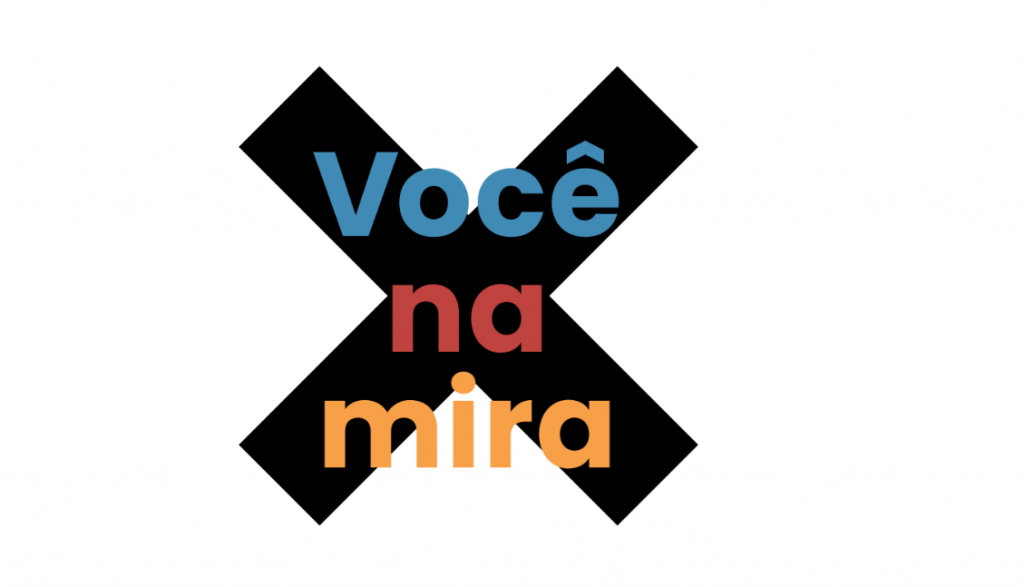
Online campaigning and the boosting of posts by candidates running for the Brazilian Chamber of Deputies
The third report of “Você na Mira” examines the use of content boosting tools by candidates elected for the Chamber of Deputies.

In the context of the 2018 elections, InternetLab is posting a series of reports on digital marketing actions used by candidacies with the aim of making online electoral campaigns more transparent. These studies are part of the Você na Mira project, which allows us to monitor the microdirecting of political propaganda on Facebook, in partnership with WhoTargets.Me. On the first report of this series we analyzed some engagement boosting techniques used by the pre-candidates to the presidency during the pre-electoral period and, on the second report, we looked to the presidential candidates’ campaigns during the first month of the electoral period.
In this third report, the focus is on the use of engagement boosting tools used on content produced by candidacies elected for the Chamber of Deputies. In addition to the information on the political ads collected by the Você na Mira tool, we collected data on the total campaign and content boosting expenses, the votes received, and the number of followers on social media. The main objective was to reveal digital campaigning practices, especially analyzing the relevance, or not, of the content boosting as a digital strategy of the electoral campaigns.
The full report can be accessed here [in Portuguese].
Read below a selection of the principal results of our research.
Money tracks: declared spendings with the boosting of content
We looked to the hired expenses declared by candidates to the Electoral Justice and made available by the website ‘Divulgação de Candidaturas e Contas Eleitorais‘. As a general rule, when compared with the total expenses of the campaigns, very little was spent on boosting content online. In 2018, of the total hired expenses declared by the elected candidacies to the Chamber of Deputies (R$348.6 million), about R$4.6 million were declared under the name ‘Expenses with boosting of content’, which accounts to just 1,3% of the campaigns’ total expending.

Facebook is the main platform used for this type of paid advertisement
The total amount that was paid to Facebook itself and for the companies Adyen and PayU, which are payment intermediaries for the platform, reaches a total of over R$4 million, an amount 25 times larger than the one declared for Google’s platform, for instance, which takes up the second place, amounting R$161 thousand in hired expenses.

The new and the old politics: the multiplicity of digital strategies
In a general sense, more traditional and incumbent parties in Brazilian politics, like PT, PP, MDB, PSDB, DEM, had largest campaign expenses and directed more resources for boosting content. This pattern can be explained by the fact that such parties have access to larger parcels of the parties’ resource fund which, after the prohibition of corporate financing for the campaign, became even more important in these elections. In opposition, emerging parties that adopted a discourse of renovation, as it is the case with NOVO, PSOL, and PSL, spent less both on the total amount of campaign expenses, as well as with the boosting of content (below the line), but also had access to smaller portions of the same electoral fund.

The analysis of the individual campaign spending strategies of the elected candidacies also contributes to this diagnosis. Generally, traditional politicians, who have more public recognition, seem to have spent more on their campaigns. Just like the case of the parties, this can indicate that such candidacies had access to a bigger portion of the parties’ fund, or that they received more campaign donations, which allowed them to spend more. In addition, it is possible that campaigns of the “old politics” also bet on the use of more traditional strategies, which are already tested and approved from other elections, and invested proportionally less on more innovative tools, like boosting online content. In contrast, the exceptions that stand out, with boosting expenses representing more than 20% of their total spendings, were some candidacies that had smaller total campaign cost than most and whose deputies were elected for the first time for the Chamber of Deputies, as it is the case of Kim Kataguiri (DEM-SP), Gilson Marques (NOVO-SP), Major Vitor Hugo (PSL-GO) and Celio Studart (PV-CE).

Followers and voters: the social capital on the digital campaigns
In a similar way to the importance of the “political capital” for the end result of an electoral candidacy, the reach of content on social networks does not only rely on how much was invested in financial terms with the boosting, but also with the “social capital” already accumulated by the candidates and parties. In this sense, we looked to the number of Facebook followers and how these numbers relate to the campaign spendings on boosting content.

Our data shows that the parties that received the largest amount of votes for the Chamber of Deputies (larger spots) are also those who either declared more expenses with boosting content or that have a bigger number of Facebook followers. That is, those who organically or through paid advertisement had a broader presence on social networks.
***
From the data we analyzed, the research identified that from the lack of significative investments on the boosting of content, the use of this tool does not seem to have been a decisive element for the success of campaigns. The track of the money seems to indicate that the success of digital campaigns does not solely depend on financial investment in order to boost the circulation and visualization of sponsored ads, but indeed that the role of the militancy and the organic engagement of supporters is relevant on the social networks, as well as on the streets.
The victory of Jair Bolsonaro and candidates of his party, PSL, is, in general, an example of this. The success of these candidacies and their dominance on social networks was not the result of massive investments on boosting, but probably of a digital campaign structured in a more diffuse and complex manner.
Access here the full report [in Portuguese].
________________________
Team responsible for the content: Beatriz Kira, Heloisa Massaro e Francisco Brito Cruz. Colaboraram Victor Pavarin and Murilo Roncolato.
Project team: Francisco Brito Cruz, Beatriz Kira, Heloisa Massaro, Sam Jeffers and Louis Knight-Webb.
Institutional team: Mariana Valente and Dennys Antonialli.
Translation: Ana Luiza Araujo